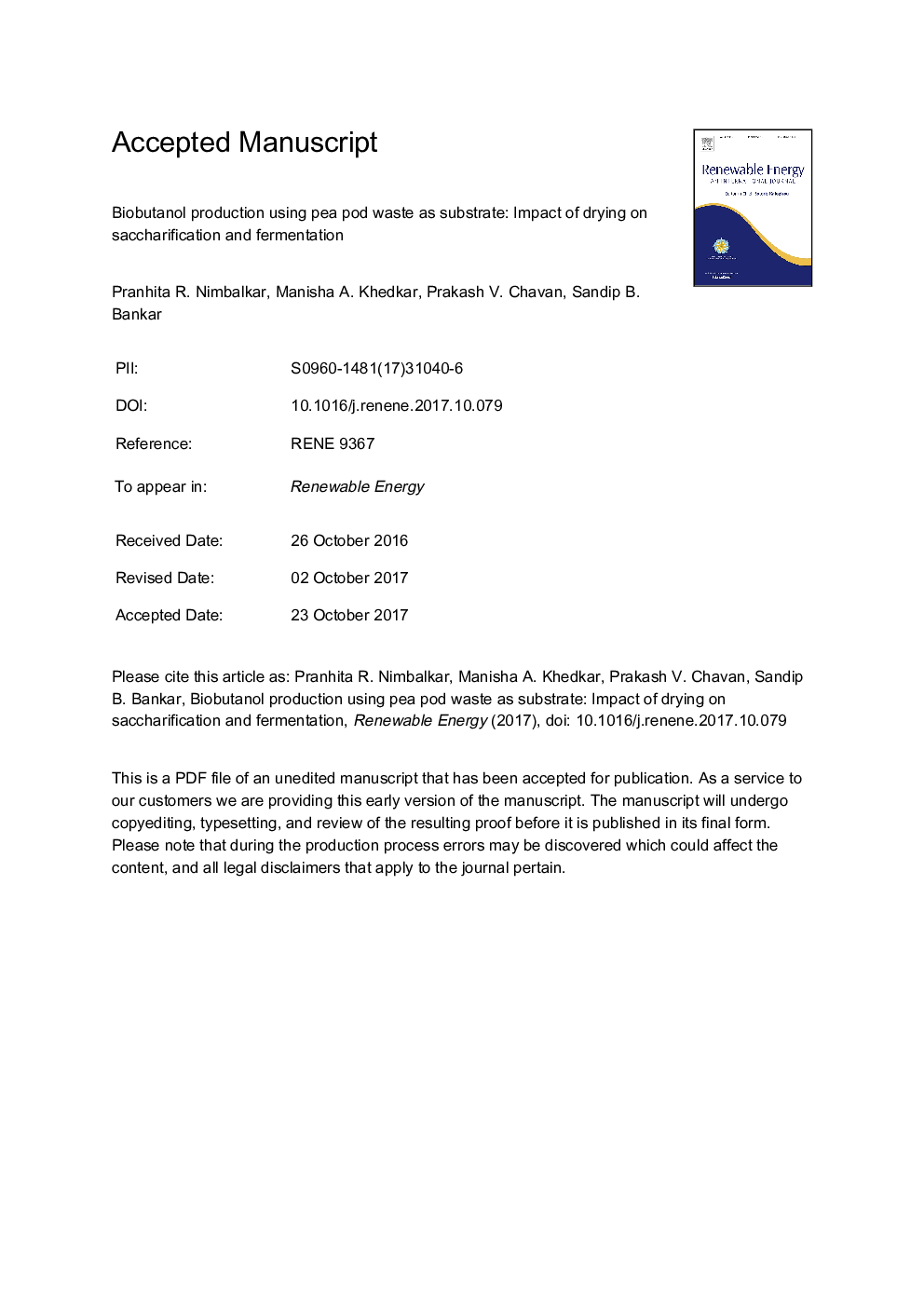| کد مقاله | کد نشریه | سال انتشار | مقاله انگلیسی | نسخه تمام متن |
|---|---|---|---|---|
| 6765104 | 1431587 | 2018 | 36 صفحه PDF | دانلود رایگان |
عنوان انگلیسی مقاله ISI
Biobutanol production using pea pod waste as substrate: Impact of drying on saccharification and fermentation
ترجمه فارسی عنوان
تولید بیو بوتانول با استفاده از زغال اخته به عنوان سوبسترا: تاثیر خشک شدن روی سوخاری و تخمیر
دانلود مقاله + سفارش ترجمه
دانلود مقاله ISI انگلیسی
رایگان برای ایرانیان
کلمات کلیدی
موضوعات مرتبط
مهندسی و علوم پایه
مهندسی انرژی
انرژی های تجدید پذیر، توسعه پایدار و محیط زیست
چکیده انگلیسی
Increasing worldwide energy consumption and limited availability of fossil fuels propelled the researchers to develop advanced fuels (biobutanol) for its commercial development. In the present work, pea pod waste from vegetable sector was investigated for biobutanol production using C. acetobutylicum B 527 through series of steps viz. compositional analysis, drying study, saccharification, detoxification, and fermentation. Proximate analysis suggested that pea pod waste is rich in holocellulose content with 32.08% of cellulose and 21.12% of hemicellulose on dry basis and hence has a huge potential to be used as carbon source during biobutanol production. In order to enhance storability and subsequent saccharification, drying kinetics of pea pod waste was carried out in varied temperature range (60-120 °C) and the experimental data was simulated by using moisture diffusion control model. Saccharification of pea pod waste samples resulted into total sugar release of 30-48 g/L. Subsequently, 95% phenolics and 30% acetic acid were removed using activated charcoal detoxification. The acetone-butanol-ethanol (ABE) fermentation of detoxified pea pod waste slurries resulted in 4.25-5.94 g/L total solvents with about 50% sugar utilization. Overall, the utilization of pea pod waste will serve as basis for valorization of vegetable waste biomass for ABE production.
ناشر
Database: Elsevier - ScienceDirect (ساینس دایرکت)
Journal: Renewable Energy - Volume 117, March 2018, Pages 520-529
Journal: Renewable Energy - Volume 117, March 2018, Pages 520-529
نویسندگان
Pranhita R. Nimbalkar, Manisha A. Khedkar, Prakash V. Chavan, Sandip B. Bankar,
